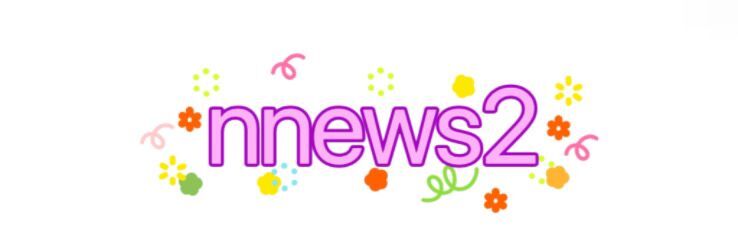Why Is DSP Conference Networking Crucial?
Networking at DSP conferences is an essential activity that can greatly influence your career, business, and future opportunities. Here’s a step-by-step guide to understanding why networking is crucial during these events and how to make the most of it.
The company is the world’s best dsp conference supplier. We are your one-stop shop for all needs. Our staff are highly-specialized and will help you find the product you need.
Understand the Importance of Networking
Identify Your Goals
Before you attend a DSP conference, clarify what you aim to achieve from your networking efforts. Whether it’s finding potential partners, learning from industry experts, or seeking job opportunities, having a clear goal will focus your efforts.
For instance, a digital marketer looking to expand their client base might focus on connecting with potential clients and showcasing previous work during the event.Research Attendees
Familiarize yourself with the attendees, speakers, and exhibitors before the conference. Most DSP conferences provide a list of participants or a schedule of speakers.
Knowing who you want to meet allows you to prioritize your networking efforts, enabling a more efficient and tailored approach. For example, if you find a speaker who specializes in programmatic advertising, you may want to prepare questions or discussion points to engage them.
Prepare Your Networking Strategy
Create a Networking Plan
Develop a plan that includes the people you want to meet, the sessions you want to attend, and the follow-up strategies you will use post-conference.
Having a written plan allows you to manage your time better and ensures you don't miss valuable networking opportunities. For example, if there's a breakout session on DSP technology advancements, make sure to attend and connect with other attendees interested in the same topic.Develop Your Elevator Pitch
Craft a concise and compelling introduction about yourself that includes your role, expertise, and what you're looking for in your networking.
A well-prepared elevator pitch will help you make a memorable first impression and initiate meaningful conversations. For instance, saying, “I’m a digital advertising strategist focusing on DSP campaigns, and I’m here to explore new collaborations,” opens the door for dialogue.
Engage Effectively During the Conference
Be Open and Approachable
Once at the DSP conference, maintain a friendly demeanor and be open to conversations. Smile, make eye contact, and be proactive in introducing yourself to others.
A genuine smile can go a long way in making connections. If someone is discussing a recent collaboration, expressing genuine interest can lead to valuable exchange of ideas.Utilize Networking Tools
Take advantage of networking tools provided at the conference, such as mobile apps or online platforms for attendees. Often, these tools will allow you to see who’s attending and even schedule meetings in advance.
Engaging through these platforms can lead to enhanced connectivity, making it easier to follow up after the conference. For instance, using an app to arrange a meeting with a potential client can streamline the connection process.
Follow Up After the Conference
Follow Up Promptly
After the event, reach out to your contacts while the conference is still fresh in their minds. Sending a brief email or message personalized with something specific you discussed can reinforce your connection.
For example, you could mention, “I enjoyed our chat about data-driven marketing at the DSP conference last week,” to remind them of your interaction.Nurture Relationships
Building a network isn't just about making contacts; it’s about nurturing those relationships over time. Share relevant articles, invite connections to industry webinars, or simply check in periodically.
For instance, sending a valuable resource related to DSP and addressing your contact by name shows that you value the connection and are genuinely interested in maintaining the relationship.
Conclusion
Networking at DSP conferences is more than just exchanging business cards; it’s about forming strategic connections that can propel your career and business forward. By following the outlined steps, you can maximize your networking efforts and leave the conference feeling accomplished and connected. Remember, effective networking is an ongoing process that continues well after the event has concluded.
Understand the Importance of Networking
1. Identify Your Goals
Before you attend a DSP conference, clarify what you aim to achieve from your networking efforts. Whether it’s finding potential partners, learning from industry experts, or seeking job opportunities, having a clear goal will focus your efforts.
2. Research Attendees
Familiarize yourself with the attendees, speakers, and exhibitors before the conference. Most DSP conferences provide a list of participants or a schedule of speakers.
Prepare Your Networking Strategy
3. Create a Networking Plan
Develop a plan that includes the people you want to meet, the sessions you want to attend, and the follow-up strategies you will use post-conference.
4. Develop Your Elevator Pitch
Craft a concise and compelling introduction about yourself that includes your role, expertise, and what you're looking for in your networking.
Engage Effectively During the Conference
5. Be Open and Approachable
Once at the DSP conference, maintain a friendly demeanor and be open to conversations. Smile, make eye contact, and be proactive in introducing yourself to others.
6. Utilize Networking Tools
Take advantage of networking tools provided at the conference, such as mobile apps or online platforms for attendees.
Follow Up After the Conference
7. Follow Up Promptly
After the event, reach out to your contacts while the conference is still fresh in their minds. Sending a brief email or message personalized with something specific you discussed can reinforce your connection.
8. Nurture Relationships
Building a network isn't just about making contacts; it’s about nurturing those relationships over time. Share relevant articles, invite connections to industry webinars, or simply check in periodically.
Conclusion
Networking at DSP conferences is more than just exchanging business cards; it’s about forming strategic connections that can propel your career and business forward. By following the outlined steps, you can maximize your networking efforts and leave the conference feeling accomplished and connected.
For more simultaneous translation deviceinformation, please contact us. We will provide professional answers.


Comments